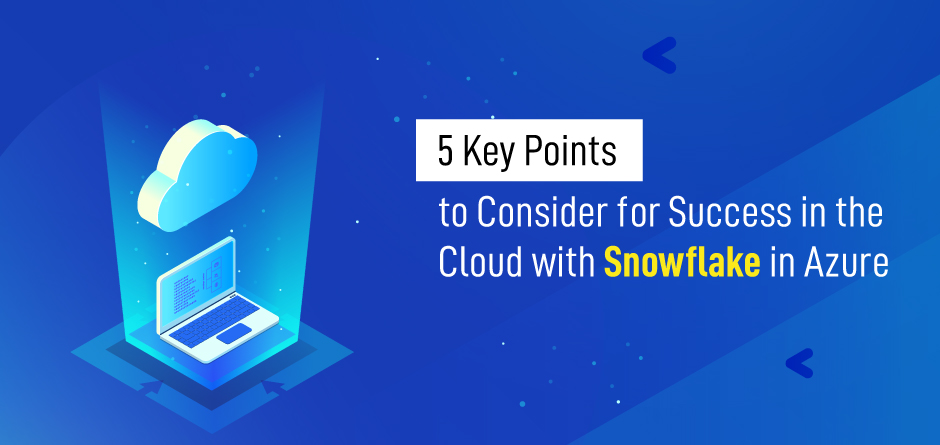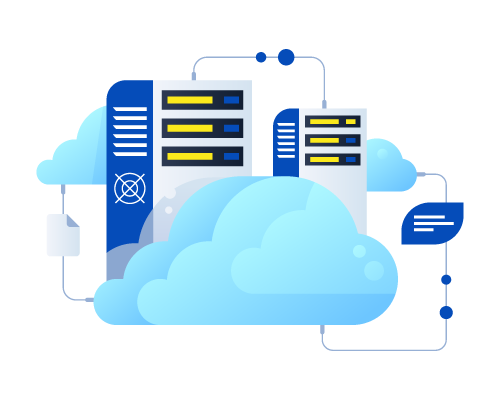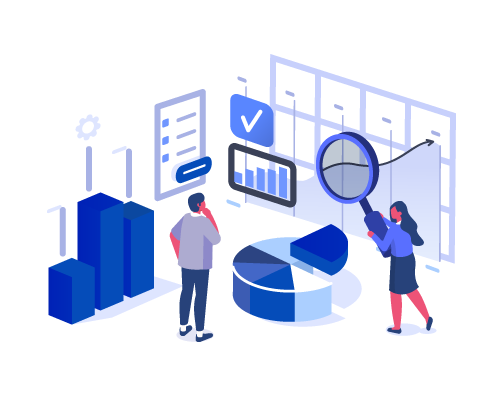
5 Key Points to Consider for Success in the Cloud with Snowflake in Azure
The Lead Data Architect of a midstream oil & gas company in Oklahoma City, shares their cloud adoption experience and what worked best for them.
When they started taking a look at doing something different for their data, they started taking up new data warehousing approaches and data pipelining to better their business results.
They got rid of “data islands”, aligned technology and business, avoided using tech just for the sake of using the latest technology and ensured value measurement.
Let’s have a look at each of these pointers in detail.
-
Eliminate Data Islands
Most companies come across a situation where they end up with a number of “data islands” because certain data is never used after what it was originally collected for. It simply gets clubbed with other datasets.
This proved to be a problem when various business stakeholders started requesting for access to the relevant datasets and data combinations.
They had to find a way to make the data available – to democratize it. This brought them to a decision making point where they leveraged cloud technology, which in their case was the Microsoft Azure Cloud.

-
Align Technology With Business
Another factor they had to consider was users directly connecting to production systems and back-end databases – security and performance was a concern.
They required a strong architecture given the size of the databases and the way their users would access their data.
Microsoft Azure Cloud let them give their users more free access to data while keeping the production systems intact.

-
Avoid Using Technology for Technology’s Sake
Using technology just because it’s impressive and hyped up is not always beneficial for business. For example, all the deep technical folks in the company were excited about the Big Data puzzle and standing up its various parts.
They looked across the technology landscape and kept an eye on advances with Big Data, Hadoop, and those types of platforms, but were hesitant to start down those paths.
They thought better of it since it didn’t seem worth all the effort it required. Plus, it didn’t have proven results since the technology is still maturing. They used Databricks in Azure instead.
They could economically build an environment without a team of infrastructure engineers to manage the backend.
They found the tool to be both economically feasible and mature, while it allowed them to explore larger datasets in Azure for their new cases.

-
Leverage the Value of Snowflake Cloud
Everyone was confused by the number of options available in the data integration space. This organization did an MVP integrating data from source systems to Azure using a few different source database platforms. They were able to experiment with different methodologies to marshal that data from their source systems to the cloud.
Soon they realized that custom code wasn’t the solution for them since they didn’t have a team of developers always available to write code. So they started looking for toolsets and matching them to their primary use cases and selecting the right replication and integration tools to do source system connectivity and CDC and enabling our move to Snowflake and Azure.
There were two key points for them that stood out about Snowflake. One, their users expected the data to be updated and refreshed frequently. They needed continuous data loading that didn’t interfere with their querying and performance. The separate and independent compute workloads of Snowflake allowed that.
Another key advantage was the autoscaling and the controls around it. When they turn on a warehouse in Snowflake, it runs until it completes its task and then after the configured idle time it goes into standby so they don’t get charged, which is a huge cost-saving advantage.
Snowflake is a true consumption-based pricing model. Those are two of the primary factors in addition to the low administrative overhead.

-
Train the Community
Once the data is in the cloud, the focus shifts to training and enablement of the user community — the actual data consumers.
They need to get a grasp of how to best use the platform in its entirety and how to get the most out of the data in the cloud.

Conclusion
The scale and scope of data sharing is expanding drastically, given the burgeoning amount of data in every sector. Snowflake in Azure, with its constantly evolving technology, allows your organization to effortlessly keep up with these changes. OmnePresent Technologies helps you make the most of the Cloud Platform right from the license to the set-up and execution. If you’re looking to leverage the same for your organization, get in touch with us.
RECENT POSTS
CATEGORIES
